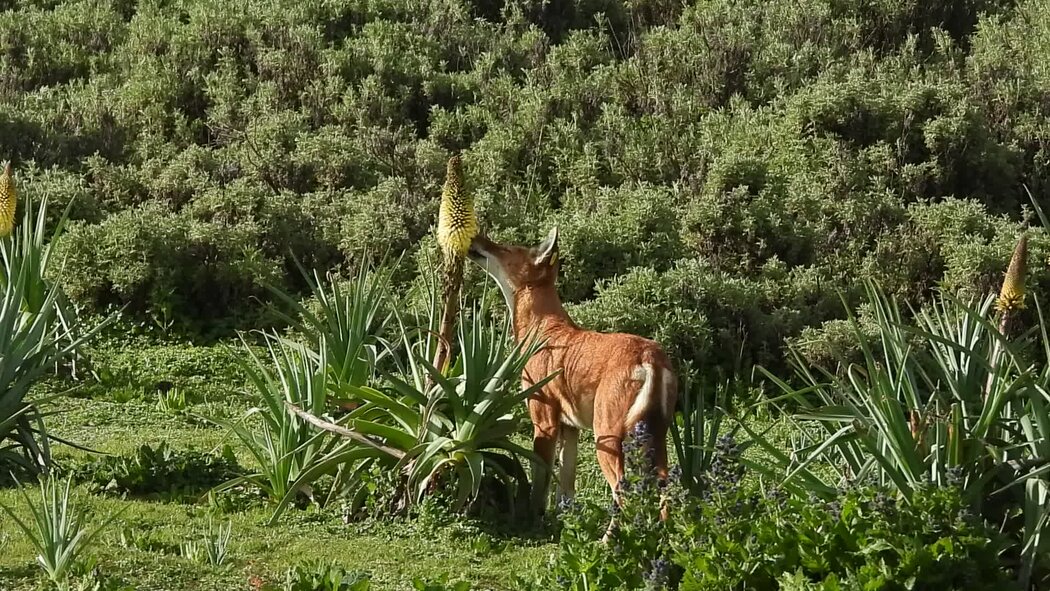After Ethiopian wolves feed on their favorite rodents, they may be enjoying a bit of dessert and in the process helping pollinate plants known as torch lilies.
The Ethiopian wolf, Africa’s most endangered predator, has a sweet tooth.
While the wolves are otherwise strict meat eaters, scientists have spotted the canids slurping nectar from torch lilies, tall, cone-shaped flowers also known as red hot pokers with nectar that tastes like watered-down honey. And because the wolves’ muzzles get absolutely covered in sticky yellow pollen, researchers suspect they might even be acting as pollinators — a first for a large carnivore, the authors write in a paper published last week in the journal Ecology.
It’s a scene from a storybook, said Sandra Lai, an Oxford University ecologist and an author of the paper.
“The wolves lick the flowers like ice cream cones,” she said.
The Ethiopian wolf is a lanky, reddish-brown canid that looks more like a coyote or fox than a wolf. It lives in Ethiopia’s mountainous highlands, a tundra-like landscape where the wolves feed on abundant rodents.
In the Bale mountain range, the wolves’ prey of choice is the big-headed African mole rat, a preposterous-looking creature with eyes set directly on top of its head so it can peep out of underground burrows. The mole rats surface for about only an hour a day to forage for vegetation. “They try keep their butt inside the hole so they can retreat if something happens, so they stretch out as long as they can” and grab at plants with their buck teeth, Dr. Lai said.
As juicy as mole rats are, they must make for a monotonous menu. Fortunately, the wolves can spice up their diet for about half of each year: The normally scrubby landscape comes alive with color as the torch lilies bloom with a fiery ombré, fading from orange to bright yellow as they ripen. Patches of the flowers can stretch for miles, Dr. Lai said, creating the illusion of a vast procession of people carrying candles.
